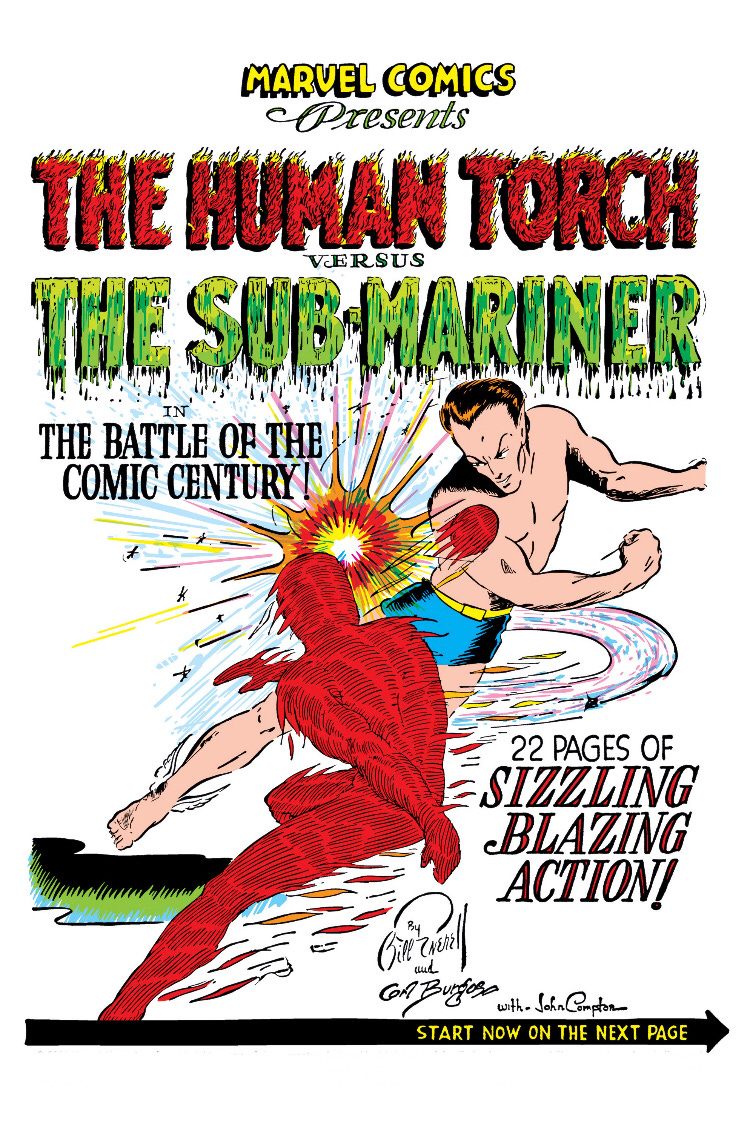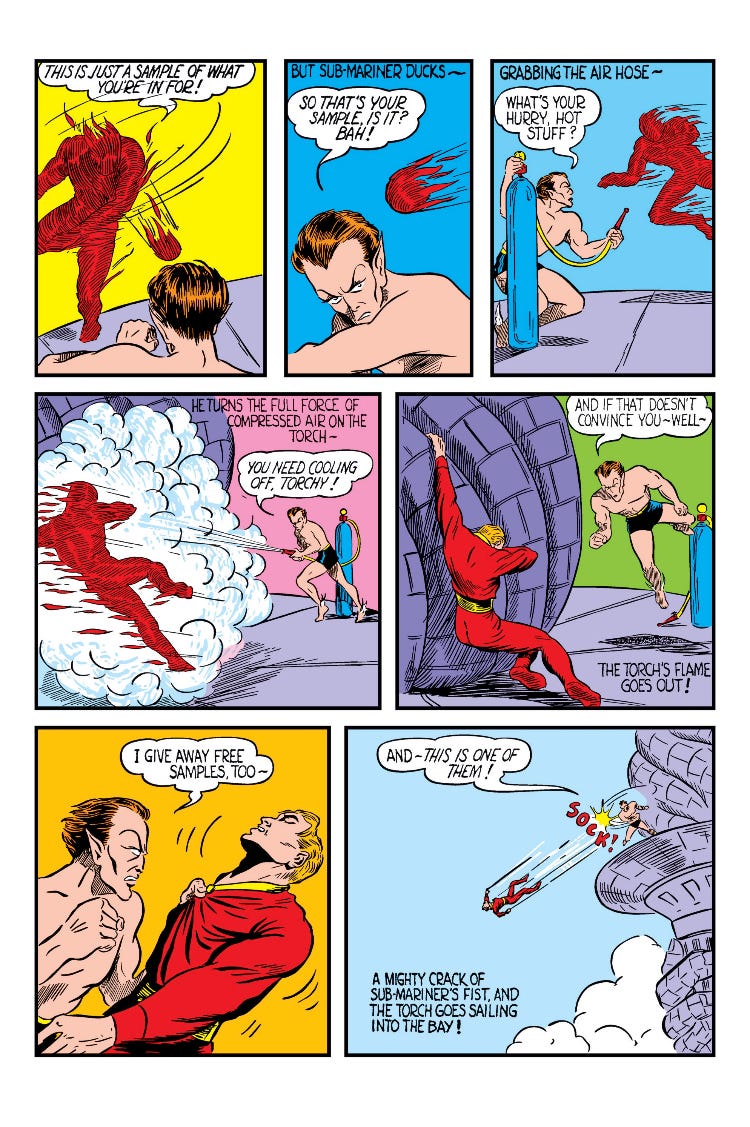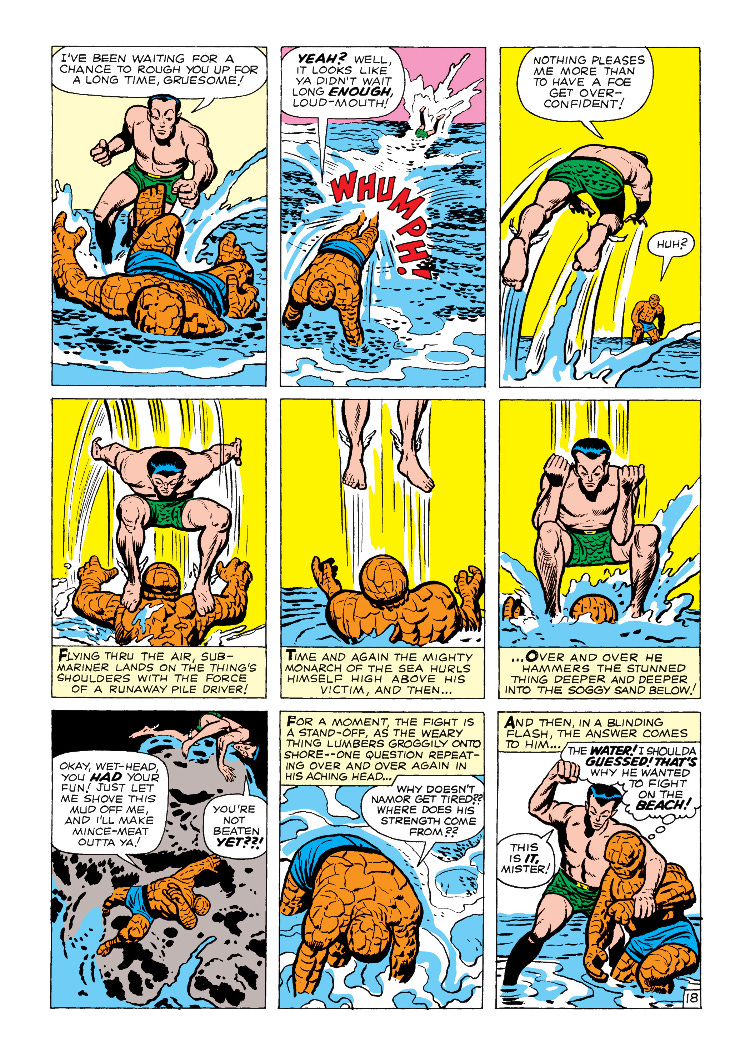Marvel Comics (and by extension Marvel Studios) might not exist if not for Namor the Sub-Mariner. I know. It’s a bold statement, but I stand by it. While he hasn’t been considered a top tier character in terms of popularity for some time, his recent debut in the teaser trailer for Black Panther: Wakanda Forever (as played by Tenoch Huerta) and the announcement of a new miniseries from Chris Cantwell and Pasqual Ferry has thrust him back into the national spotlight.
For those who are unfamiliar with the character, it would be tempting to assume he is just Marvel’s version of Aquaman. The similarities are impossible to ignore. Both characters are the product of a love affair between a human father and an Atlantean mother. Both characters can breathe underwater. Both characters are descended from royal bloodlines. Both characters are blessed with super strength and invulnerability. What is probably most well known among the general population because of jokes and memes, both characters can control marine life.
What might surprise you is that Namor debuted more than two years before Aquaman. Namor was created by legendary cartoonist Bill Everett for a comic called Motion Picture Funnies Weekly #1 in April of 1939. While the comic was never mass produced, sample copies were printed in black and white ink with the intent to distribute them to theater owners. When the comic failed to be published, Everett took his eight-page story to publisher Timely Comics to be included in their debut superhero anthology comic: Marvel Comics #1 which was published in August of 1939. Other superheroes making their debut in that issue included Human Torch (an android that would burst into flames when exposed to air created by Carl Burgos), and Angel (a costumed detective created by Paul Gustavson). The comic also included non-superhero pulp characters such as the Western-themed Masked Rider and Tarzan analog Ka-Zar. Namor and Human Torch would prove to be the two most popular characters from that issue and would go on to headline the series (renamed Marvel Mystery Comics starting with the second issue) going forward and ultimately getting their own self-titled series (Sub-Mariner Comics and Human Torch Comics respectively).
Those two joined the ranks of the most popular superheroes of the time like Batman, Superman, and Captain Marvel. What set Namor apart from his contemporaries was that he was more of an antihero than a traditional superhero. Namor was depicted as a proud member of the Kingdom of Atlantis who initially despised humans for the way they treated the seas. He straight up murders two deep sea divers in his first appearance without the slightest hint of remorse. Future stories would describe him as someone who held a special hatred for Americans in particular, and he was frequently coming into conflict with humanity. Everett drew Namor (whose name is just “Roman” spelled backwards if you hadn’t caught that) as having a swimmer’s build (heh), wearing swimming briefs, having exaggerated eyebrows and pointed ears, and having a pair of tiny feathered wings on each ankle. He also had a lighter complexion than his Atlantean countrymen who were typically green. Everett also gave him the abilities of super strength, invulnerability, flight, and the ability to breathe both underwater and on land (none of which belonged to his Atlantean brethren). He also sometimes had the ability to command marine life and secret water while on land to keep himself moist, but these were much more inconsistent.

His soaring popularity and obvious conflict of interests with Timely’s other popular superhero (Human Torch who had become a police officer in New York City) led to a truly revolutionary story in Marvel Mystery Comics #8-10: the first ever fight between two superheroes in which Namor came to blows with Human Torch. The bulk of the fighting took place in issue #9 with each respective creator drawing their character on each page. I struggle to wrap my mind around how they were able to make that work, but the story is an absolute blast. Both heroes are constantly trading blows and trash talk that ultimately ends in a stalemate, but the ramifications for the comic book industry were massive. Having a publishing company’s characters all exist within a shared universe would set the template not just for the comic book industry but for superhero movies as well (just watch the trailer I linked for Black Panther: Wakanda Forever for evidence). Namor’s massive popularity and antihero pedigree made it possible for such a crossover to happen.
As the United States entered World War II in the real world, so did the heroes in Timely Comics. Namor, Human Torch, and the newly created Captain America began fighting Nazis instead of each other throughout the 1940s. By the end of the decade, the most popular heroes and their sidekicks joined forces as the All-Winners Squad. Unfortunately, as the war ended so too did interest in superhero comics. The 1950s saw Timely Comics change their name to Atlas Comics, and they slowly phased out superhero comics in favor of giant monster comics inspired by schlocky Atomic Age monster movies of the decade.
The superhero genre would make a huge comeback in 1961 with the debut of Fantastic Four by Stan Lee and Jack Kirby. To further establish the new series as the flagship title of the publishing company, Atlas Comics changed its name once more. Now it went by Marvel Comics. This helped usher in the Silver Age of superhero comics for the publisher which would also include series like Amazing Spider-Man, Incredible Hulk, X-Men, and Avengers. While the heroes of the Golden Age remained in mothballs, Lee and Kirby did repurpose the name “Human Torch” for one of the members of the Fantastic Four. No longer a robot cop, this Human Torch was a brash teenager with a similar look and powers. Lee and Kirby couldn’t leave Namor out of the fun forever though. Namor would return in Fantastic Four #4 published in 1962. His turn to full blown heroism in the 1940s would be undone, and he would once again behave in more of an antihero role. Sometimes he would align himself with villains like Doctor Doom, and other times he’d align himself with heroes like the Fantastic Four. Throughout the 1960s his focus would be on rebuilding the Kingdom of Atlantis and siding with whomever would help him towards this ultimate goal. Namor would also be written as much more of an arrogant dick and womanizer during this time. It’s a trait that has stuck through modern day. He is as likely to save the day as he is to laugh in your face and steal your girl. That’s just how Namor rolls. Sue Storm (the Invisible Woman and wife of Reed Richards) in particular has captured Namor’s attention for years, but it has never been returned.
The next major revelation regarding Namor took place in X-Men #6 published in 1964. In that issue, Stan Lee and Jack Kirby addressed a mystery that had followed Namor since his creation in 1939: if neither humans nor Atlanteans are born with the abilities of super strength, invulnerability, flight, or the ability to communicate with marine life, then how is it that Namor was born with those abilities? The answer Lee and Kirby came up with? Namor is a mutant. This has led him to be recruited by both the X-Men and Brotherhood of Mutants for years, though Namor rarely joins up with any particular group. Stan Lee is also responsible for an equally important part of Namor’s lore: his battle cry! When going into battle, Namor often shouts, “Imperius Rex!” He first utters the phrase in Tales to Astonish #77 by Stan Lee and Gene Colan. What does it mean? I have no clue, but it sounds badass!
Namor’s popularity has never reached the heights of the Golden Age when he was arguably the flagship character for Timely Comics, but he has consistently appeared in major stories and events published by Marvel Comics throughout the Silver, Bronze, and Modern Ages. Namor played an especially crucial role in the pages of New Avengers (2013-2015) written by Jonathan Hickman with art from multiple artists. That series followed the exploits of the secretive Illuminati, a cabal of the most influential figures in Marvel Comics trying to solve the problems they deemed too big for the rest of the world to know about. Though they were both members, Namor and Black Panther routinely butted heads as their two nations were frequently in conflict with one another. This sometimes led to full scale war with heavy casualties. I would expect some of these story elements to find their way into the movies. New Avengers would ultimately lead into the massive multiverse shattering event Secret Wars in 2015 (also written by Hickman with art by Esad Ribic). With the recent announcement that the culmination of the current “Multiverse Saga” in the Marvel Cinematic Universe will be Avengers: Secret Wars in 2025, it might behoove folks to read up on that event and Namor’s role in it.

Namor the Sub-Mariner may never return to the levels of popularity that he reached in the 1940s, but his importance to the success of Marvel Comics and superhero comics in general can’t be overstated. His success paved the way for morally gray antiheroes like Wolverine, Punisher, Deadpool, Catwoman, Red Hood, Spawn and others, and his titanic crossover battle with Human Torch paved the way for shared universes and crossovers that have resulted in the most financially successful film franchise in cinema history. He deserves far more credit than he gets. Hopefully he begins to get it with the spotlight shifting in his direction once more.







